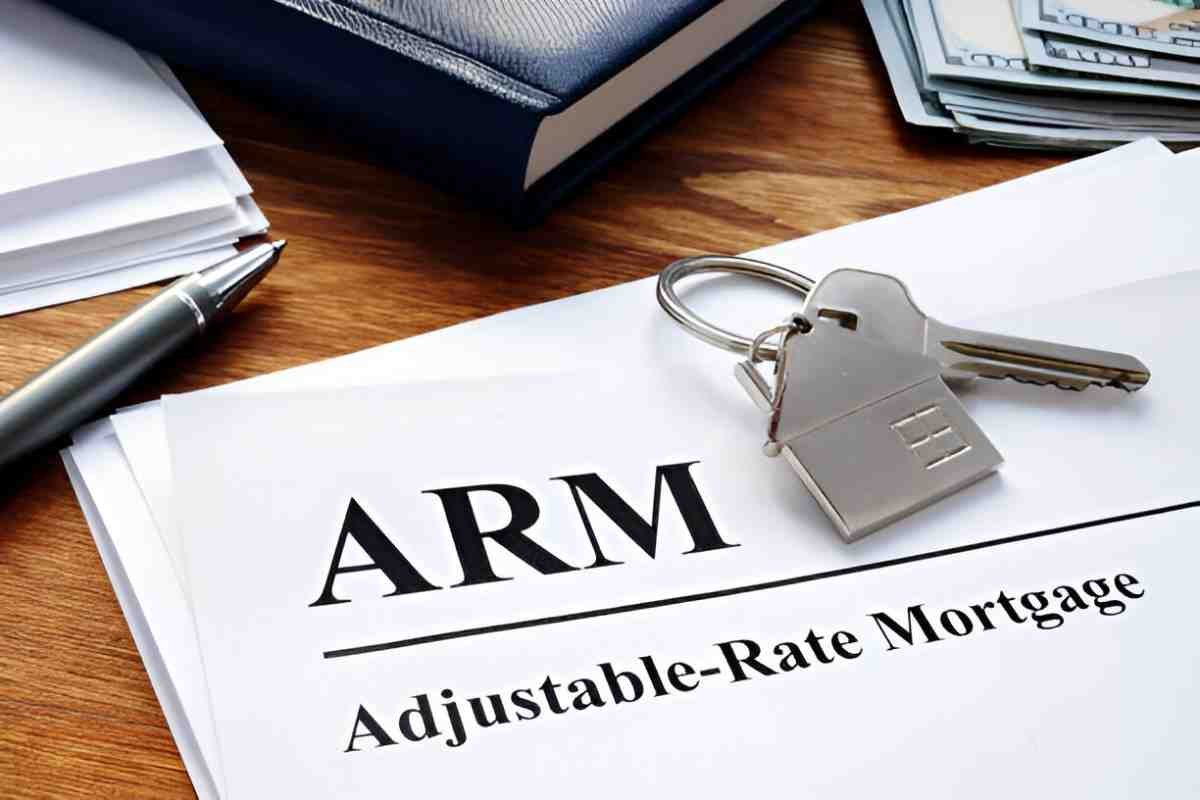Introduction
When considering a home loan, borrowers often face a choice between fixed-rate and adjustable-rate mortgage (ARM) loans. An ARM offers an initial fixed interest rate for a set period, followed by periodic adjustments based on an index. Understanding ARMs is critical for making an informed decision, as they can be financially advantageous or risky depending on market conditions and personal financial stability.
Table of Contents
What is an Adjustable-Rate Mortgage?
An adjustable-rate mortgage (ARM) is a home loan with an interest rate that changes over time. Unlike fixed-rate mortgages, where the rate remains constant throughout the loan term, ARMs have an initial fixed period followed by adjustments at predetermined intervals.
Key Features of ARMs
- Initial Fixed-Rate Period: The interest rate remains unchanged for a set number of years, typically 3, 5, 7, or 10 years.
- Adjustment Period: After the initial period, the rate adjusts annually or semi-annually based on the loan agreement.
- Index and Margin: The rate adjustment is based on a benchmark index plus a fixed margin.
- Rate Caps: Limits on how much the rate can increase or decrease per adjustment period and over the loan’s life.
- Fully Indexed Rate: The sum of the index rate and the margin, determining the new interest rate after the fixed period ends.
How Do ARM Loans Work?
Example Calculation of an ARM Loan
Let’s assume a 5/1 ARM with:
- Loan Amount: $300,000
- Initial Fixed Rate: 4.5%
- Fixed Period: 5 years
- Index: 1-Year Treasury Yield
- Margin: 2.5%
- Rate Cap: 2% first adjustment, 1% annually thereafter, 5% lifetime cap
For the first five years, the borrower pays a monthly mortgage based on the 4.5% fixed rate: M = \frac{P \times r(1+r)^n}{(1+r)^n - 1}
Where:
- M = Monthly payment
- P = Loan principal ($300,000)
- r = Monthly interest rate (4.5% / 12 = 0.00375)
- n = Number of months (5 years × 12 months = 60 months)
Using this formula, the monthly payment is $1,520.06 (excluding taxes and insurance).
Adjustments After the Fixed Period
After five years, assume the index rises to 3%. The new rate calculation is:
\text{New Rate} = \text{Index} + \text{Margin} = 3.0\% + 2.5\% = 5.5\%If the rate cap for the first adjustment is 2%, the maximum new rate can only go up to 6.5%. If the rate caps at 1% per year thereafter, future adjustments will be limited accordingly.
Assuming the rate adjusts to 6.5% in year 6, the new monthly payment will increase, requiring recalculation using the formula above. If rates continue rising, borrowers could face payment shock.
Pros and Cons of ARMs
Advantages
| Benefit | Explanation |
|---|---|
| Lower Initial Rate | ARMs typically start with lower interest rates compared to fixed-rate mortgages, making them more affordable initially. |
| Potential Savings | If interest rates remain stable or decrease, borrowers may pay less over the loan’s lifetime. |
| More Home for Less | A lower initial rate can qualify borrowers for larger loans. |
| Refinancing Opportunities | If rates rise, borrowers may refinance into a fixed-rate loan before major adjustments occur. |
Disadvantages
| Drawback | Explanation |
|---|---|
| Rate Uncertainty | Interest rate fluctuations can lead to unpredictable mortgage payments. |
| Payment Shock | If rates increase significantly, monthly payments may become unaffordable. |
| Complexity | ARMs involve complex terms, making them harder to understand than fixed-rate mortgages. |
| Prepayment Penalties | Some ARMs charge penalties for refinancing or early payoff. |
Types of ARM Loans
1. Hybrid ARMs
These ARMs start with a fixed-rate period before adjusting. Common types include:
- 3/1 ARM: Fixed for 3 years, adjusts annually thereafter.
- 5/1 ARM: Fixed for 5 years, adjusts annually.
- 7/1 and 10/1 ARMs: Longer fixed periods with annual adjustments.
2. Interest-Only (IO) ARMs
Borrowers pay only interest for a set period, reducing initial payments but leading to higher future payments when principal repayment starts.
3. Payment-Option ARMs
These allow borrowers to choose among multiple payment options, including minimum payments, interest-only payments, or fully amortizing payments. These can be risky due to negative amortization.
When Does an ARM Make Sense?
Ideal Scenarios for an ARM
- Short-Term Homeownership: If planning to sell before the fixed period ends, an ARM can provide cost savings.
- Falling Interest Rate Environment: Borrowers can benefit from lower rates without refinancing.
- Higher Initial Affordability: If a fixed-rate mortgage is unaffordable, an ARM might allow homeownership at a lower entry cost.
When to Avoid an ARM
- Long-Term Homeownership: If planning to stay for decades, a fixed-rate mortgage offers stability.
- Uncertain Income Growth: If future payments may become unaffordable, an ARM is risky.
- Rising Interest Rate Environment: If rates are trending upward, future adjustments may result in much higher payments.
ARM vs. Fixed-Rate Mortgage: A Comparison
| Feature | ARM | Fixed-Rate Mortgage |
|---|---|---|
| Initial Rate | Lower | Higher |
| Rate Stability | Variable | Fixed |
| Payment Stability | Uncertain | Predictable |
| Long-Term Cost | Uncertain | Predictable |
| Ideal for | Short-term homeowners, those expecting future rate drops | Long-term homeowners, stability seekers |
How to Evaluate an ARM Offer
1. Check the Index and Margin
Different ARMs use different indexes (e.g., LIBOR, SOFR, Treasury Yield). Understanding the index helps predict future adjustments.
2. Understand the Caps
Rate caps limit increases but differ among lenders. Compare caps before choosing an ARM.
3. Calculate Worst-Case Scenarios
Use the fully indexed rate plus the lifetime cap to estimate the highest possible payment.
4. Consider Refinancing Options
If future rate hikes seem likely, plan for a possible refinance into a fixed-rate mortgage.
Conclusion
Adjustable-rate mortgages offer both opportunities and risks. They provide lower initial rates but come with uncertainty after the fixed period. Borrowers should carefully evaluate their financial situation, future plans, and market conditions before choosing an ARM. Understanding rate caps, indexes, and margins is essential to making an informed decision. When used wisely, ARMs can be a strategic tool for home financing, but they require careful consideration to avoid unexpected financial strain.





